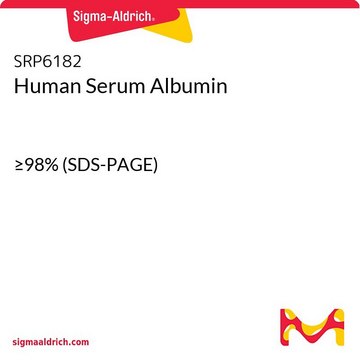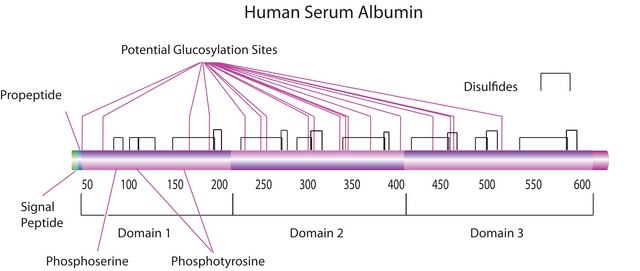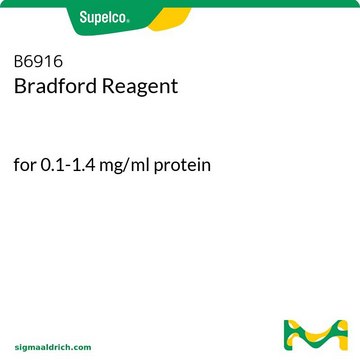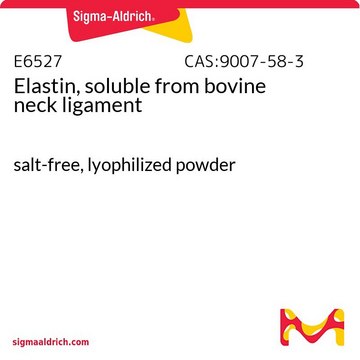추천 제품
일반 설명
Human albumin is encoded by ALB gene that is mapped to human chromosome 4q. The gene is developmentally regulated and is synthesized by the liver. The encoded protein has a molar mass of 65,000 Da and consists of a single polypeptide chain of 585 amino acids.
애플리케이션
Albumin has been used in ion exchange chromatography to compare the albumin isolated from whole human plasma. It has been used to bind to phage clones in phage binding assay.
생화학적/생리학적 작용
Human albumin is a globular unglycosylated serum protein that makes up for more than half of the total plasma or serum proteins. It functions in the maintenance of COP (cellular oncotic pressure). It binds to hydrophobic organic anions such as, bilirubin, long-chain fatty acids and haematin and some cations such as magnesium and calcium. It also serves as a secondary or tertiary carrier for steroids, vitamin D and thyroxine. It is involved in the catabolism of prostaglandins and metabolism of certain endogenous substances, such as lipids, and eicosanoids. It acts as a plasma buffer and scavenges oxygen free radicals, thus reducing the pathological effects of certain inflammatory diseases. Mutation in the gene coding for albumin leads to familial dysalbuminaemic hyperthyroidism.
물리적 형태
Lyophilized as a salt free solid.
신호어
Danger
유해 및 위험 성명서
Hazard Classifications
Resp. Sens. 1A
Storage Class Code
11 - Combustible Solids
WGK
WGK 2
Flash Point (°F)
Not applicable
Flash Point (°C)
Not applicable
가장 최신 버전 중 하나를 선택하세요:
시험 성적서(COA)
Lot/Batch Number
이미 열람한 고객
자사의 과학자팀은 생명 과학, 재료 과학, 화학 합성, 크로마토그래피, 분석 및 기타 많은 영역을 포함한 모든 과학 분야에 경험이 있습니다..
고객지원팀으로 연락바랍니다.






